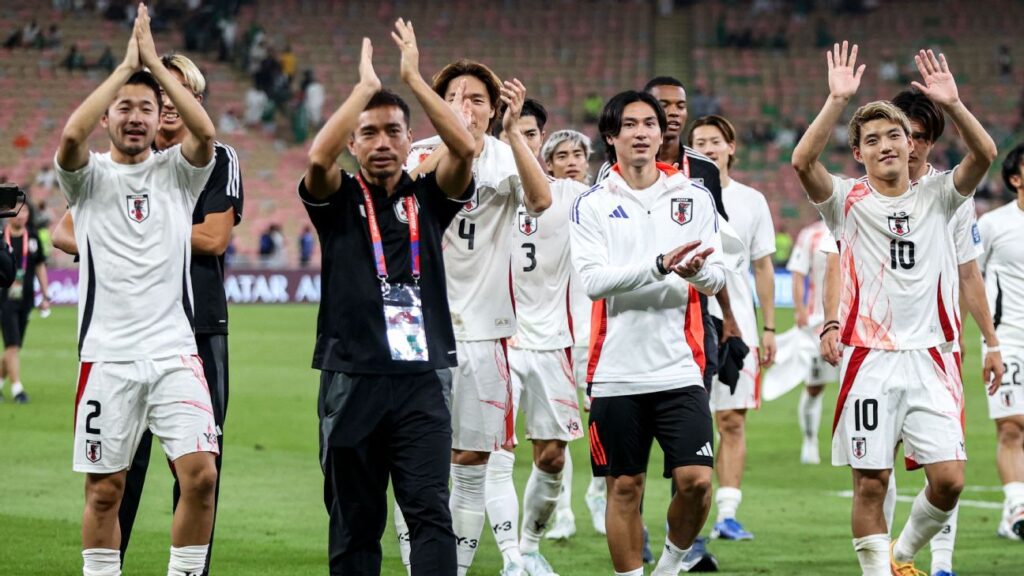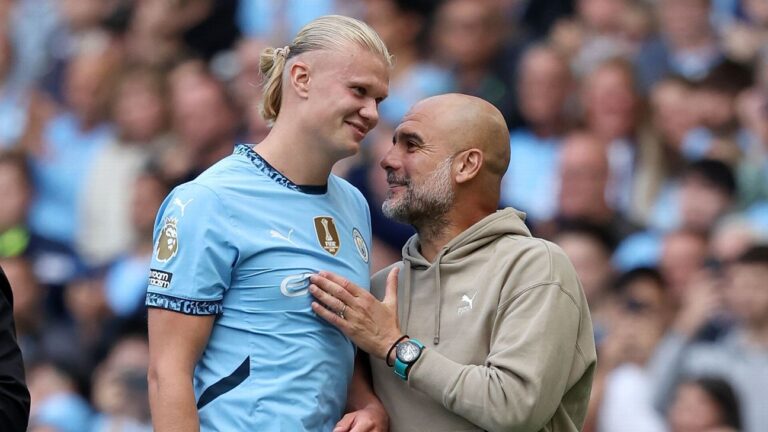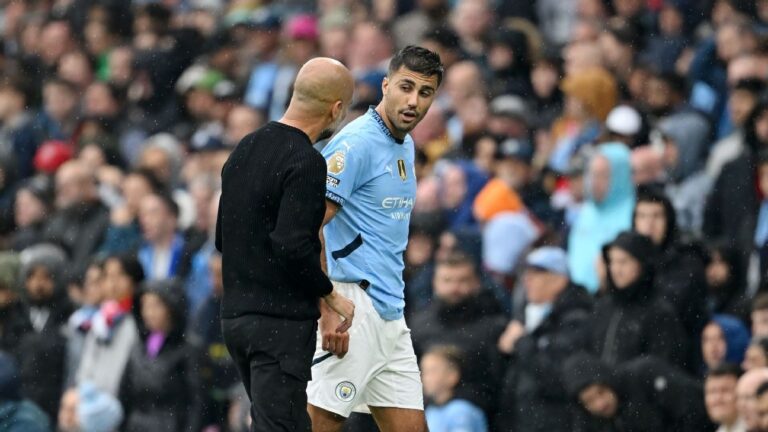TOKYO, Japan — In the modern age of football, extended coaching stints are rare; rare enough that if a coach leads a nation through multiple FIFA World Cup cycles, like Japan’s Hajime Moriyasu, it’s a genuinely notable event.
Just under two years on from its staging, just seven of the 32 coaches that stalked the touchlines of Qatar still find themselves in the same employment today. There’s Lionel Scaloni, of course, who has been in the role since 2018 and guided Argentina to a World Cup crown against another who remains in the job, Didier Deschamps of France — who, at more than 12 years possesses the third-longest active tenure in international football. There’s Zlatko Dalić, who has led Croatia to a World Cup semifinal and final since taking over in 2017, as well as Walid Regragui who guided Morocco to an unprecedented semifinal berth in 2022. Even on the smaller stage of Asia, half the coaches from January’s Asian Cup have departed, with Australia’s Graham Arnold the latest to do so when he resigned last month.
Moriyasu, though, has persevered.
The 56-year-old has been at the helm of his native Japan since 2018, succeeding Akira Nishino after the Samurai Blue’s exit in the round of 16 in Russia. And while it hasn’t always been smooth sailing for the former midfielder — the axe was reportedly hovering during 2022 qualification, only for him to oversee a 2-0 win over Australia and secure a spot in Qatar — he will lead his side into another World Cup qualifier against the Socceroos this Tuesday as not just the most in-form side in Asia, but possibly global football.
Simply put, across both the second and third phases of Asian qualifiers, the Samurai Blue have been perfect.
Across the six games of the second phase of qualification, Japan scored 21 goals across five wins without conceding once. Across three games in this third phase, they’ve kept three more clean sheets whilst scoring 14 times: steamrolling China and Bahrain in their opening fixtures before defeating fellow Asian powers Saudi Arabia, led by Roberto Mancini, in Jeddah last week — the 2-0 win the first time Japan has beaten the Green Falcons in the Gulf state.
“More important than scoring a goal myself is winning at this stadium for the first time. That’s a huge thing for Japanese football,” said Crystal Palace’s Daichi Kamada, who opened the scoring.
Going further back and examining the past 16 months, Japan has won 20 of their last 22 games, which included a three-game run in which they scored 12 goals against four conceded whilst downing Canada, Turkey, and, most impressively, Germany in Wolfsburg. Of the players who featured in the last year, 37 play with European clubs — including 22 of the October squad — which has brought a new level of depth and competition for places.
A young core of the squad that has been referred to as “The Tokyo Olympics Generation” has come to the fore; exposed to the senior national setup at the time Japan hosted the global showpiece in preparation to replace the old guard of stalwarts such as Maya Yoshida, Yuto Nagatomo, and Hiroki Sakai. And many of these aren’t just in Europe, they’re serving as key contributors to their clubs, too; Parma goalkeeper Zion Suzuki, SC Freiburg’s Ritsu Dōan, Takefusa Kubo of Real Sociedad, AS Monaco’s Takumi Minamino, Kaoru Mitoma of Brighton & Hove Albion, and Liverpool’s Wataru Endō. Additionally, defenders Takehiro Tomiyasu of Arsenal and Hiroki Itō of Bayern Munich are absent from the squad as they continue to work their way back from injury, with reports indicating that both are well on track to return.
Already winners of the Women’s World Cup, Japan has long been considered one of the most likely nations to break the European/South American duopoly in the men’s and with the talent their producing and the continued maturation of the game in the nation — the J1 League was only founded in 1992 — one can see why.
In pursuit of this goal, the Japanese Football Association (JFA) released Japan’s Way, described as being a “National Football Philosophy” that would work backwards from an ideal state of having “10 million football families and [winning] the FIFA World Cup by 2050.” It makes for fascinating reading.
While there was the obvious focus on technical and physical excellence that has come to define Japan’s status as Asia’s leading power, its analysis of leading football nations found that while strengthening the national team was vital this was accompanied by the importance of fostering a culture around the game that stretches far beyond the elite. The construction of this was therefore one of its key findings, emphasising the importance of continued improvement of the J1 League, already Asia’s best, and stating “We must create an environment that allows everyone to enjoy football at their level. An environment that brings joy to those who play, watch or support (players, coaches, referees, organisers, parents, fans, supporters and more).”
Seeking to reclaim and repurpose a phrase that had been a self-deprecating acknowledgement of weakness, it declared that Japan’s Way needed to be one that resonated and was representative of the strengths of Japan, rather than seeking to copy and paste the culture of an existing successful nation, and serve as its compass as it adjusted and responded to the changing face of football. “In that boundless sea flows the current of world football,” it read.
Which segues quite nicely to the potential stormy waters requiring navigation during this window, which will conclude this Tuesday in Saitama.
While Japan’s recent run of 20 wins in their last 22 games is impressive, it’s worth noting that those two defeats came at the Asian Cup, the first against Iraq in the group stages and then against Iran in the quarterfinals. Most observers were expecting the Samurai Blue to warm into the tournament, but their campaign failed to ever get out of first gear. And while Moriyasu’s side has rightly been recognised as playing some of the best football in Asia as of late — their new generation’s free-scoring habits helping to shed the defensive, pragmatic tag that has accompanied the coach — the October window represented a test of the side’s progress in competitive fixtures.
While neither the Saudis nor Australians have been at their best in recent times, they still represent two of Asia’s best, monopolising — alongside Japan, South Korea and Iran — places at the World Cup during its 32-team era. And with qualification for 2026 already looking almost certain, these two fixtures would give fresh insight as to the progression since the Asian Cup. They would be favoured in both and if they were able to meet those expectations — perhaps this window could be considered something of a performance appraisal — they, and the rest of the world, would glean a small insight into how close they are to realising the vision of Japan’s Way.
And with a historic win in Jeddah secured last week, one tick, the focus now turns to the Socceroos in Saitama on Tuesday, a clash both history and form suggest Japan should win.
Though the two belligerents have established one of Asia’s best rivalries, one born of mutual respect, Australia has never won on Japanese soil. Those in green-and-gold have won just two of their meetings since the turn of the century, and just one of the 12 staged since they joined the Asian Football Confederation following their win over Japan at the 2006 FIFA World Cup as a member of Oceania. A 3-1 win over China against Adelaide on Thursday finally got the Socceroos on the board in the third round of Asian qualification but after a loss to Bahrain — who subsequently lost 5-0 to Japan — and a draw with Indonesia in their opening two fixtures sparked Arnold’s exit, and his replacement with Tony Popovic, few observers hold realistic hopes of an upset.
However, the Socceroos have also made a habit of raising their game when playing against the world’s best: taking their struggles to break down low blocks while serving as the ball-dominant side in possession and turning them around on their highly ranked foes. And in Popovic, they have a coach that has a demonstrated history of defying the odds in Asia: leading Western Sydney Wanderers to an Asian Champions League crown in 2014 — which included a round of 16 win against a Sanfrecce Hiroshima outfit coached by Moriyasu himself. So while scant few Down Under are expecting it — moreso hoping their side can limit the damage — it also wouldn’t be unprecedented if Socceroos were able to emerge on Tuesday with some kind of smash-and-grab.
If Japan can avoid that, another question will have been answered by Moriyasu and his side.




